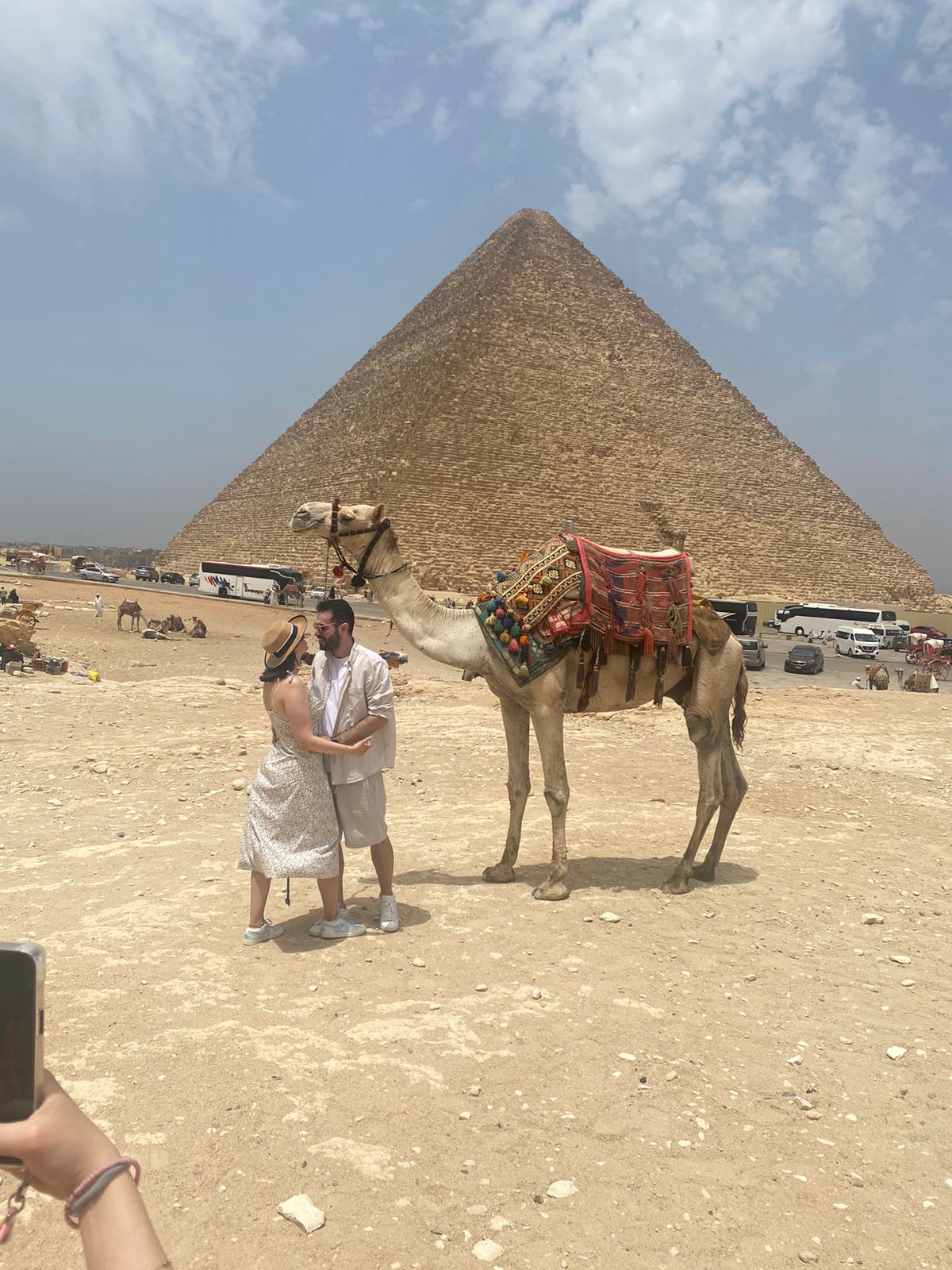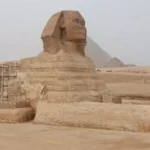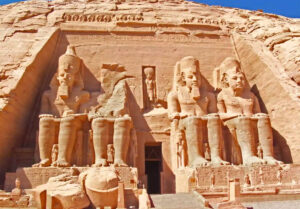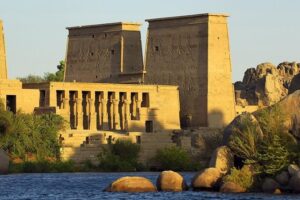The Great Pyramid of Giza: An Enduring Wonder
The Great Pyramid of Giza, also known as the Pyramid of Khufu, stands as an unparalleled testament to ancient Egyptian architectural and engineering prowess. This monumental structure, erected around 2580-2560 BC as the tomb for Pharaoh Khufu of the Fourth Dynasty, is the oldest and only remaining of the Seven Wonders of the Ancient World. Its immense scale and precise construction continue to astound experts and capture the imagination of millions worldwide.

A Colossus of Stone
Originally soaring to an astonishing height of 146.6 meters (481 feet), the Great Pyramid held the title of the world’s tallest man-made structure for over 3,800 years. Even today, despite the erosion and removal of most of its polished white limestone casing, it stands at a formidable 138.5 meters (454 feet). The pyramid’s base measures approximately 230 meters (755 feet) square, with an astonishing accuracy of alignment to the cardinal points. Builders used an estimated 2.3 million stone blocks, weighing a total of 6 million tonnes, to construct the pyramid. Many of these blocks, particularly the granite used in the King’s Chamber, weigh many tons, with some exceeding 80 tonnes.
Unveiling the Interior
The Great Pyramid’s interior is a marvel of ancient design. A complex system of passages leads to three primary chambers. They cut the lowest, known as the Subterranean Chamber, into the bedrock, but it remains unfinished. Above it lies the so-called Queen’s Chamber, and researchers still debate its true purpose. The most significant is the King’s Chamber, built entirely of massive red granite blocks. This chamber houses the granite sarcophagus intended for Pharaoh Khufu.
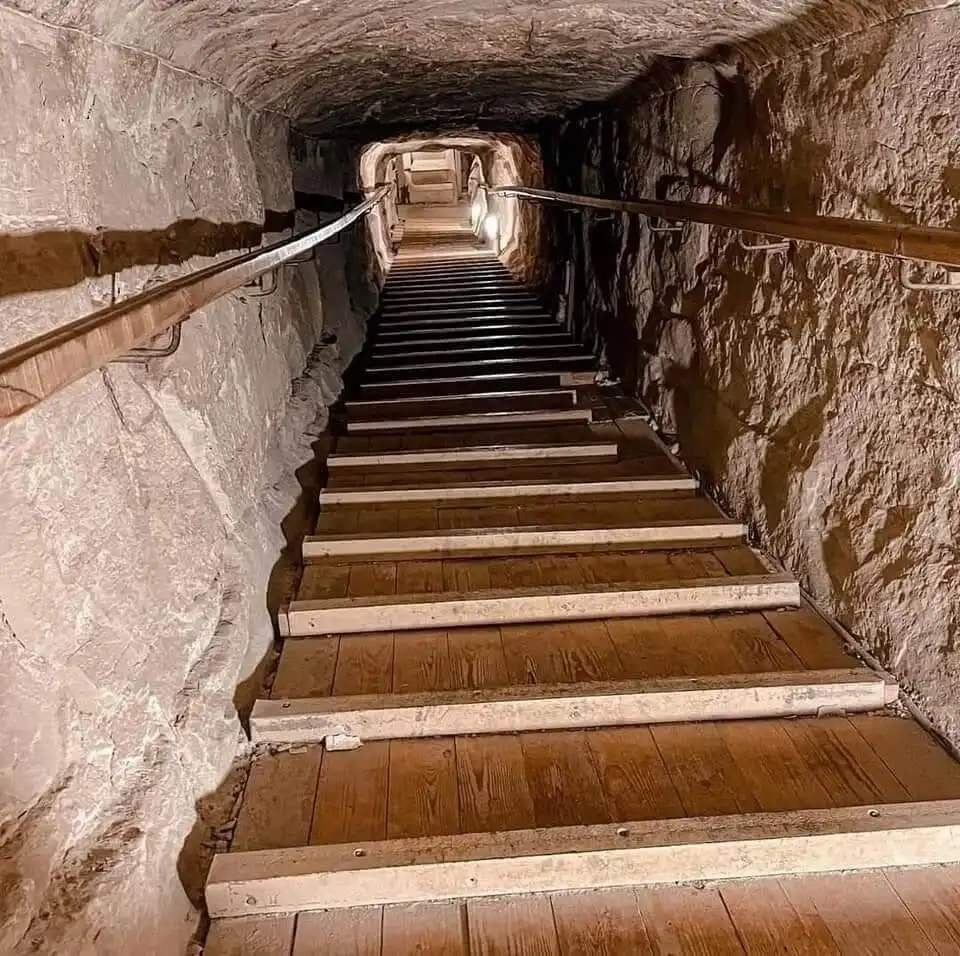
The Enigma of Construction
How the ancient Egyptians achieved such a monumental feat remains a subject of intense academic and public discussion. The precise cutting, transportation, and placement of millions of massive stones without the aid of modern machinery continues to baffle researchers. While the most widely accepted theories involve the use of various types of ramps—straight, spiraling, or internal—no definitive archaeological evidence has yet emerged to fully explain the construction process. The sheer accuracy of the pyramid’s dimensions and alignment, achievable even with modern equipment, further deepens the mystery.
Surrounding Complex and Legacy of the Great Pyramid
The Great Pyramid was not a standalone structure. It formed part of a larger mortuary complex, which included a mortuary temple, a causeway leading to a valley temple near the Nile, smaller pyramids for Khufu’s queens, and numerous mastaba tombs for nobles and officials. Additionally, several boat pits containing disassembled solar barques were discovered, intended to transport the pharaoh in the afterlife.
The Great Pyramid of Giza is more than just a tomb. It is a global icon. It stands as a testament to human ingenuity and determination. Perhaps it even shows a deeper understanding of engineering than we previously imagined. The pyramid continues to inspire awe. It sparks our curiosity. It invites us to contemplate the remarkable achievements of a civilization that flourished over four millennia ago. All of this happened right here in what is now Giza Governorate, Egypt.
Theories of Extraterrestrial Involvement
Perhaps the most famous and persistent “weird theory” is that aliens built the pyramids. Proponents of this idea often point to the precise alignment of the pyramids with celestial bodies, the enormous weight of the stones, and the seemingly impossible perfection of their placement. They argue that ancient Egyptians simply lacked the technology and knowledge to achieve such feats on their own. Therefore, a more technologically advanced civilization from beyond Earth must have provided the guidance, tools, or even direct labor for construction.
While this theory is captivating, mainstream Egyptologists and scientists firmly reject it. They emphasize that there is no archaeological evidence to support alien intervention, and the accomplishments of the ancient Egyptians, when studied in detail, reveal a profound understanding of engineering, logistics, and resource management within their own historical context.
The Lost Advanced Civilization Hypothesis
Another popular theory posits that a highly advanced, lost civilization, possibly predating the Egyptians or a remnant of a mythical place like Atlantis, was responsible for the pyramid’s construction. This theory suggests that this civilization possessed sophisticated technology that has since been lost to humanity. This could include anti-gravity devices, sound-based levitation, or precision cutting tools far beyond what we attribute to the Bronze Age.
Advocates of this theory often highlight the incredible accuracy of the stone cutting and the seemingly impossible feat of moving and lifting multi-ton blocks. They argue that these aspects cannot be explained by simple ramps and manual labor alone. Some proponents even suggest that the Great Pyramid itself was not merely a tomb, but a sophisticated machine or “power plant” designed to harness some unknown form of energy.
The “Concrete Pyramid” Theory
While less fantastical than alien or lost civilization theories, the “concrete pyramid” theory is still considered unconventional by many Egyptologists. Materials scientist Joseph Davidovits proposed this theory. He suggests the pyramid builders did not carve all stones from quarries. Instead, they cast some on-site. They used an ancient concrete form, a “geopolymer.” This material was made from local limestone, clay, lime, and water. Davidovits and his colleagues presented chemical and microscopic evidence.
They claim this supports the idea of reconstituted limestone blocks. This evidence particularly applies to the upper sections and casing stones. They argue this would explain the remarkable fit between some blocks. It also addresses the logistical challenges of transporting millions of stones. While intriguing, this theory faces skepticism. Many archaeologists and geologists maintain that most of the pyramid’s stones are natural. They believe they are quarried limestone.
Other Quirky Ideas about the Great Pyramid
Beyond these prominent theories, numerous other imaginative ideas about the Great Pyramid have emerged:
- The Pyramid as an Astronomical Observatory/Calendar: Some believe the pyramid’s precise alignments and internal passages were not just for burial but served as a sophisticated astronomical observatory or a giant calendar, encoding cosmic knowledge.
- Symbolic and Mystical Meanings: Various groups, from ancient mystics to modern New Age enthusiasts, attribute symbolic, numerological, or prophetic meanings to the pyramid’s dimensions and internal layout, seeing it as a repository of hidden wisdom.
- Acoustic Properties: Some theories suggest the pyramid’s chambers were designed with specific acoustic properties, perhaps to amplify sound or create resonant frequencies for rituals or other unknown purposes.
- Water-Based Construction: A more recent, though still unconventional, theory suggests that the Egyptians used intricate systems of water locks and waterways within the Giza plateau to float and position the massive blocks, rather than relying solely on ramps and sledges.
Why Do These Theories about the Great Pyramid Persist?
The enduring allure of “weird theories” about the Great Pyramid stems from several factors. The sheer scale and precision of the monument truly are astonishing, even with modern understanding. Furthermore, the limited direct accounts from the ancient Egyptians themselves regarding the construction process leave room for speculation.
Finally, humans naturally seek extraordinary explanations for extraordinary phenomena. This is especially true when conventional answers lack the full drama or mystery a wonder like this demands. Mainstream archaeology continues to uncover evidence. This evidence points to the ingenuity of the ancient Egyptians themselves.
However, these unconventional theories add another layer to the Great Pyramid’s timeless enigma. They ensure its place as a source of fascination and wonder for generations to come.Tour the Great Pyramid with us, and before you go, check Egypt’s weather!


